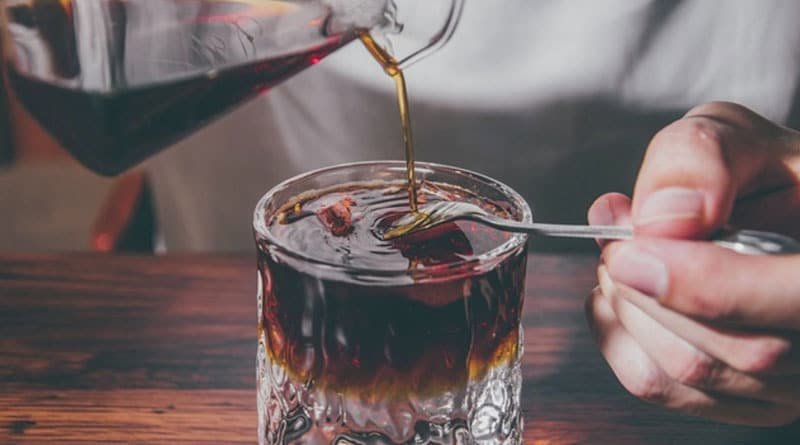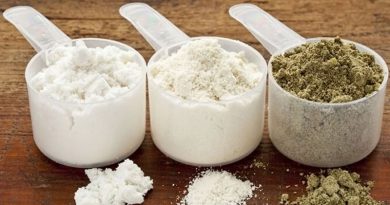How to Make Coffee Less Acidic: Expert Advice
While coffee is a favorite beverage globally, its acidic nature can cause discomfort for some individuals, leading to digestive issues or acid reflux. For those who love coffee but struggle with its acidity, understanding how to make coffee less acidic can be a game-changer.
Several factors, including the bean type, the roasting process, and the brewing method, determine coffee’s acid. Lighter roasts, for instance, tend to have higher acidity levels than darker roasts. Specific brewing methods, like using a French press, can produce a less acidic cup than a drip coffee maker.
You can enjoy your favorite beverage without negatively impacting your body by choosing the right beans, adjusting your brewing technique, and adding ingredients that neutralize acidity.
This guide will discuss precisely how coffee acidity works and provide many practical tips to help you decrease it, ensuring that your coffee experience remains enjoyable and comfortable.
How to Make Coffee Less Acidic: 7 Easy Steps to Follow
1. Select Beans: Opt for low-acid coffee beans, especially those that are dark roast and from regions known for producing smooth coffees.
2. Prepare Water: Employ filtered alkaline water or a tiny pinch of baking soda to counteract the acidity.
3. Grind Beans: Use a coarse grind for a French press for drip coffee.
4. Change brewing method: Use cold brew to reduce the acidity of the coffee.
5. Neutralizing Ingredients Filtration: Give the coffee ground milk, cream, a pinch of salt, or even grams of eggshells.
6. Check The Water Temperature: It will lower the extraction of acids, Allow for more contact time between water and coffee, and raise the body oil fraction in the cup. It also raises the risk of setting black coffee from the vapor.
7. Play Around with Flavors: Add spices like cinnamon or cardamom to bring the taste to a more harmonic level and reduce the likely acid perception.

What Makes Coffee Acidic?
Acids occur naturally in coffee beans and are a large part of what gives these beans their distinct flavor. The primary acids in coffee are chlorogenic, quinic, and citric acid. They can make Coffee taste vibrant and tangy but are also responsible for upset stomachs in some people.
Why Reduce Coffee Acidity?
Lowering acidity in coffee will result in less toxic coffee to your stomach, reduce heartburn, and improve the taste for those generally sensitive to acidic foods.
If you are now worried about how to make coffee less acidic, stick around for ways you can implement it right now.
How to reduce acidity in coffee
Several strategies—from selecting the right beans to adjusting the brewing process—can be employed to reduce acidity in coffee.
1. Go for Low-Acid Coffee Beans
Let Us Learn How to Make Coffee Less Acidic: Best Coffee Beans for low acid coffee. What types of coffee have less acid?
Choose dark roast beans, as they tend to have less acidity when compared to light roasts.
- Low Acidity or Mild – Seek out Coffee with labels marked with low or mild acidity.
- Use beans from low-acid growing regions like Brazil, Sumatra, and Nicaragua.

2. Adjust Your Brewing Method
How coffee is brewed can majorly affect how acidic it is. If you are wondering how to make coffee less acidic, then here are the ways:
Cold Brew: Cold brewing yields up to 67% less acidic coffee than hot-brewed coffee.
French Press: This method has a longer brew time, which can produce a less acidic cup of coffee.
Paper Filter: A paper filter traps some acidic oils and makes a smoother brew.
3. Control Water Temperature
The water temperature can determine whether you can extract the acids from the coffee beans entirely. Read the following steps to discover how to neutralize the tar-like devastation and make coffee less acidic.
- Water at 195°F-205°F.
- More acidic – Boiling water extracts acids beyond a beneficial point.
4. Grind Size Matters
Another way we get flavors is by the size of the coffee grounds because it will also affect the extraction process. let’s dive into how you can make coffee less acidic:
- Grinding coarser-such as for methods like a French press to reduce acidity
- Steer clear of fine grinds – these increase surface area and enhance acid extraction.
5. Use Alkaline Water
Here are some tricks for making coffee less acidic: alkaline water. Unfortunately, brewing does not occur without dissolved salts, and some acids are neutralized since there is no perfect water.
- A filter that raises the alkalinity of the water
- Reduce acidity by using a tiny pinch of baking soda in your coffee grounds before brewing.
6. Incorporate Milk or Cream
Milk or cream can dilute the acids in coffee. How to make coffee less acidic (read before you quit coffee!).
Splash Coffee drinks something with milk or cream in it. The calcium in dairy helps neutralize acid. For those of us who are lactose intolerant, go for non-dairy alternatives: almond or Soy milk.
7. Try Adding Salt
It may seem odd, but a pinch of salt helps take the edge off the bitterness and acidity in your coffee:
- Slightly salt your coffee grounds before brewing.
- Stay moderate because too much salt will destroy the taste.
8. Balance with Eggshells
An old trick- Using Egg Shells makes coffee less acidic
Crush the soap and let it dry, clean the eggshells, and crush it very fine.
Sprinkle the crushed eggshells into coffee grounds before running through the machine.
9. Include Spices
Flavors such as cinnamon mask Coffee’s acidity
- Put one cinnamon stick into the coffee grounds
- Try other spices, say cardamom nutmeg.

5 Tips from Three Coffee Scoop Users
The importance of PH to coffee acidity: A better knowledge of the pH values of coffee could help you achieve great control of how to make coffee less acidic. Coffee has a pH between 4.85 and 5.10, an acidic pH. Raising the PH level is just adjusting the brewing process, and the components used in your recipe to make your coffee less acidic.
Effect of Coffee Processing Method: Acidic coffee beans refer to different processing steps and their acidic impact on the flavor. Those who are interested in how to make coffee less acidic.
Washed Process: Typically yields more fruity or acidic coffee.
Natural process: Method involves drying the coffee beans without removing the pulp and naturally fermenting the pulp. Because of the prolonged contact with the fruit pulp, usually yields a sweeter, less acidic coffee.
The Importance of Freshness: Acidity – Stale beans tend to lose their acidic tangerine transformed tastes and flavor voltage. Maintaining its freshness can help you to have a good start in learning how to make coffee less acidic:
- Purchase whole fresh beans and grind them just before brewing.
- Coffee beans to be stored in an airtight container in a dark, dry area.

Coffee Still Too Acidic?
If you have tried the steps above, and your coffee is still too acidic, you cannot give up. Here are a few extra tips on taking the acid out of your coffee:
- Add more milk or plant-based creamer.
- Add 15 seconds to your brew time so the sluggish-extracting beans have more time to work their magic.
- Test out various coffee brands and blends to see what you like best.
Off-Tasting Coffee?
Occasionally, de-acidifying can alter the taste of your coffee in unexpected ways. Address this by:
- Changing up the spices. – Educational Spin
- Balancing the coffee-to-water ratio.
Final Verdict
As we wrap up our exploration of how to make coffee less acidic, it’s clear that several strategies can enhance your coffee experience. Selecting low-acid beans is a great starting point. Cold brew methods bring a naturally smoother taste by reducing acidity through a gentler extraction process.
Incorporating milk or cream can also help balance the flavors, softening the acidity for a more pleasant sip. Meanwhile, tweaking the brewing time and temperature allows you to fine-tune the acidity level to match your preferences.
Feel free to try out these methods and see which combination delivers the perfect cup for you. With these tips, enjoying a smoother, less acidic coffee can be a delightful reality.
FAQs of Make Coffee Less Acidic
Q:Will these methods change the taste of my coffee?
A:While each method may slightly alter the flavor profile of your coffee, they do so to reduce acidity without compromising the overall quality and enjoyment of your coffee.
Q:Can I still make espresso less acidic?
A:While espresso is naturally higher in acidity due to its brewing method, using dark roasted, low-acid beans and adding a bit of milk or a milk alternative can help reduce its acidity.
Q:Is cold brew coffee always less acidic?
A:Yes, cold-brewed coffee is generally less acidic than hot-brewed coffee because the cold-water extraction process removes fewer acidic compounds from the coffee grounds.
Q:How much baking soda is in coffee
A:To reduce the acidity in your coffee with baking soda, a minimal amount is all you need—about 1/4 teaspoon (or a pinch) for a pot of coffee (roughly 8-12 cups) should suffice. A tiny dash (less than 1/16 of a teaspoon) makes just a single cup.
Q:Does baking soda reduce acid in coffee?
A:Yes, baking soda can effectively reduce acidity in coffee. Baking soda, or sodium bicarbonate, is a natural alkaline substance that neutralizes acids. When a small amount is added to coffee, it can lower the perceived acidity of the brew without significantly altering its flavor, provided it’s used sparingly. It is a valuable remedy for coffee drinkers who experience acid reflux or stomach discomfort from acidic foods and beverages. However, it’s essential to use it judiciously; too much can lead to a slightly salty or soapy taste.
Q:how to neutralize the acid in coffee
A:To neutralize the acid in coffee and make your brew more stomach-friendly, consider integrating a few simple adjustments into your coffee-making routine. One effective method is adding a pinch of baking soda to your coffee grounds before brewing; baking soda is a naturally alkaline substance that can counteract acidity without significantly altering the taste when used sparingly.
Q:Can you add cinnamon to coffee after brewing?
A:Yes, absolutely! Enhancing your coffee with a sprinkle of cinnamon after brewing is a delightful way to elevate its flavor and aroma. Sprinkling ground cinnamon directly into your cup creates a more subtle, evenly distributed flavor.




